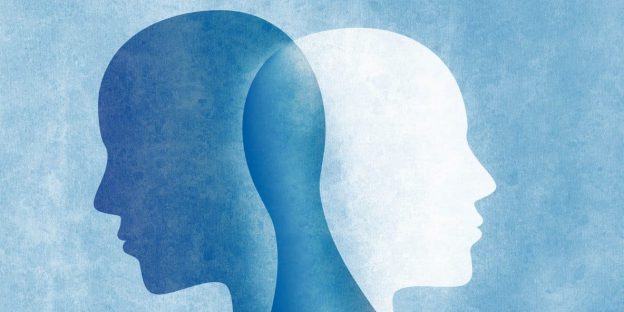Shame and vulnerability are intricate emotional states deeply intertwined with addiction recovery. Research in psychology and neuroscience has shed light on the profound impact of these emotions on mental health and well-being. Studies have revealed that shame, a deeply painful feeling of unworthiness or inadequacy, and vulnerability, the state of feeling exposed or susceptible to harm, play significant roles in the development and perpetuation of addictive behaviors.
According to studies conducted by researchers such as Dr. Brené Brown, shame has been identified as a powerful contributor to addiction, often serving as a driving force behind substance abuse as individuals seek to numb or escape from painful feelings of self-loathing or unworthiness. Furthermore, vulnerability, when left unaddressed, can exacerbate feelings of isolation and hopelessness, making individuals more susceptible to addictive patterns as they seek comfort or relief.
Understanding the dynamics of shame and vulnerability is crucial in addiction recovery, as these emotions can serve as formidable barriers to progress and healing. By delving into the science behind these emotions and exploring evidence-based strategies for coping and growth, individuals in recovery can empower themselves to navigate the challenges of shame and vulnerability with resilience and self-compassion, ultimately fostering a path toward lasting sobriety and well-being.

The Impact of Shame and Vulnerability on Addiction Recovery
Shame and vulnerability are not merely fleeting emotions; they can deeply influence an individual’s mindset, behaviors, and overall well-being, particularly in the context of addiction recovery. Shame often arises from feelings of inadequacy, failure, or unworthiness, stemming from past experiences, societal expectations, or internalized beliefs. In the realm of addiction, shame can manifest as self-blame, guilt, or a sense of moral deficiency, further perpetuating the cycle of substance abuse.
Similarly, vulnerability, the experience of feeling exposed or susceptible to harm, can heighten the risk of relapse and hinder progress in recovery. Individuals grappling with addiction may perceive vulnerability as a weakness or liability, fearing judgment or rejection if they were to disclose their struggles or seek support. Consequently, they may resort to avoidance, denial, or self-isolation to cope with these feelings, further exacerbating their sense of disconnection and distress.
Moreover, shame and vulnerability often coexist, amplifying their impact on addiction recovery. The fear of being judged or rejected due to perceived flaws or shortcomings can intensify feelings of shame, driving individuals deeper into isolation and self-destructive behaviors. Conversely, acknowledging and addressing vulnerability with compassion and understanding can pave the way for healing and growth, empowering individuals to confront their challenges and embrace authentic connections in their recovery journey.
Navigating Shame and Vulnerability in Recovery
In addiction recovery, addressing shame and vulnerability requires a multifaceted approach that encompasses self-awareness, acceptance, and resilience. One key aspect involves recognizing and challenging distorted beliefs and internalized stigma surrounding addiction. By understanding that addiction is a complex and multifactorial condition influenced by genetic, environmental, and psychological factors, individuals can begin to reframe their perceptions of themselves and their experiences.
Additionally, fostering a sense of self-compassion and self-forgiveness is essential in mitigating the impact of shame on recovery. Rather than viewing relapse or setbacks as indicators of personal failure, individuals can learn to approach them with curiosity and kindness, recognizing them as opportunities for growth and learning. Through mindfulness practices, cognitive-behavioral techniques, and therapeutic interventions such as dialectical behavior therapy (DBT) or acceptance and commitment therapy (ACT), individuals can cultivate greater self-awareness and emotional resilience, enabling them to navigate challenges with greater ease and resilience.
Furthermore, building a supportive network of peers, mentors, and professionals can provide invaluable encouragement and validation in times of vulnerability. By connecting with others who share similar experiences and challenges, individuals can find solace in knowing that they are not alone and that recovery is possible. Peer support groups, such as Alcoholics Anonymous (AA) or SMART Recovery, offer safe spaces for individuals to share their stories, gain insights, and receive encouragement from others who understand their struggles. Through these connections, individuals can find strength in vulnerability and draw inspiration from the resilience of their peers.
Embracing Vulnerability as a Source of Strength
In addiction recovery, embracing vulnerability can be transformative, serving as a catalyst for growth, healing, and connection. Rather than viewing vulnerability as a weakness to be avoided or suppressed, individuals can learn to see it as a source of authenticity and courage. By acknowledging their vulnerabilities and embracing their imperfections, individuals can cultivate greater self-acceptance and resilience in the face of adversity.
Research has shown that vulnerability is an essential component of meaningful relationships and personal growth. Brené Brown, a renowned researcher and author, describes vulnerability as the birthplace of love, belonging, joy, courage, empathy, and creativity. By allowing themselves to be vulnerable, individuals open themselves up to deeper connections with others and a richer, more fulfilling life.
In the context of addiction recovery, embracing vulnerability involves acknowledging the pain and struggles associated with addiction while also recognizing the strength and resilience it takes to seek help and pursue recovery. It requires individuals to confront their fears of judgment and rejection and to reach out for support when needed. By allowing themselves to be seen and heard authentically, individuals can experience a profound sense of liberation and empowerment.
Embracing vulnerability fosters a sense of empathy and compassion towards oneself and others. By recognizing their shared humanity and embracing their vulnerabilities, individuals can cultivate greater empathy towards others who are struggling and develop a deeper sense of connection and belonging. Through vulnerability, individuals can find the courage to confront their fears, embrace their authentic selves, and embark on a journey of healing and transformation.
Overcoming Shame: Challenging Negative Self-Beliefs
Shame is a powerful and often debilitating emotion that can deeply impact individuals in addiction recovery. It stems from a belief that one is fundamentally flawed or unworthy of love and acceptance. Shame can manifest in self-criticism, self-doubt, and a persistent sense of inadequacy, making it difficult for individuals to fully engage in the recovery process.
Addressing shame requires individuals to challenge negative self-beliefs and cultivate self-compassion and acceptance. Therapy modalities such as cognitive-behavioral therapy (CBT) and dialectical behavior therapy (DBT) can be effective in helping individuals identify and reframe negative thought patterns associated with shame. By challenging distorted beliefs and developing more realistic and compassionate perspectives, individuals can begin to heal from shame and develop a more positive sense of self.
Peer support groups and community-based programs can provide individuals with opportunities to share their experiences, receive validation and support, and realize that they are not alone in their struggles. Through connecting with others who have faced similar challenges, individuals can gain a sense of belonging and acceptance, which can counteract feelings of shame and isolation.
Ultimately, overcoming shame requires individuals to cultivate self-awareness, self-compassion, and resilience. By acknowledging their vulnerabilities and embracing their imperfections, individuals can break free from the grip of shame and reclaim their sense of worthiness and dignity. Through self-acceptance and connection with others, individuals can empower themselves to navigate the challenges of addiction recovery with courage and grace.
Overcoming Shame and Vulnerability with Professional Help
Addressing shame and vulnerability is a crucial aspect of empowering oneself through recovery. By recognizing the impact of shame on their lives and taking proactive steps to challenge negative self-beliefs, individuals can cultivate self-compassion, resilience, and a greater sense of worthiness. Through therapy, peer support, and self-reflection, individuals can break free from the grip of shame and embrace their vulnerabilities as strengths. By embracing their authentic selves and fostering a sense of connection with others, individuals can navigate the challenges of addiction recovery with courage, grace, and resilience.


















